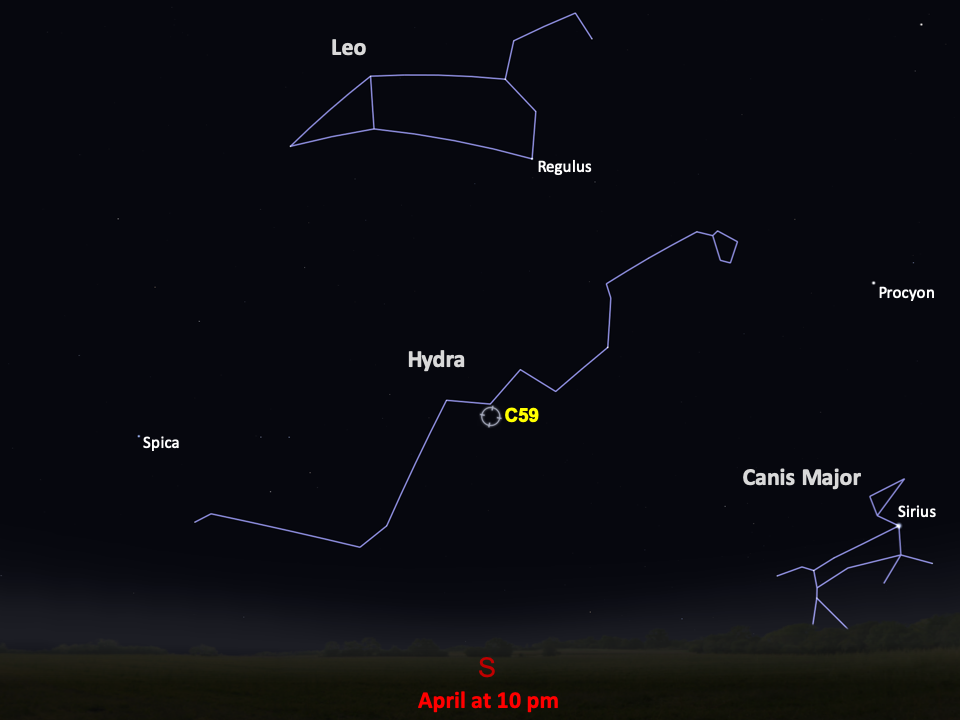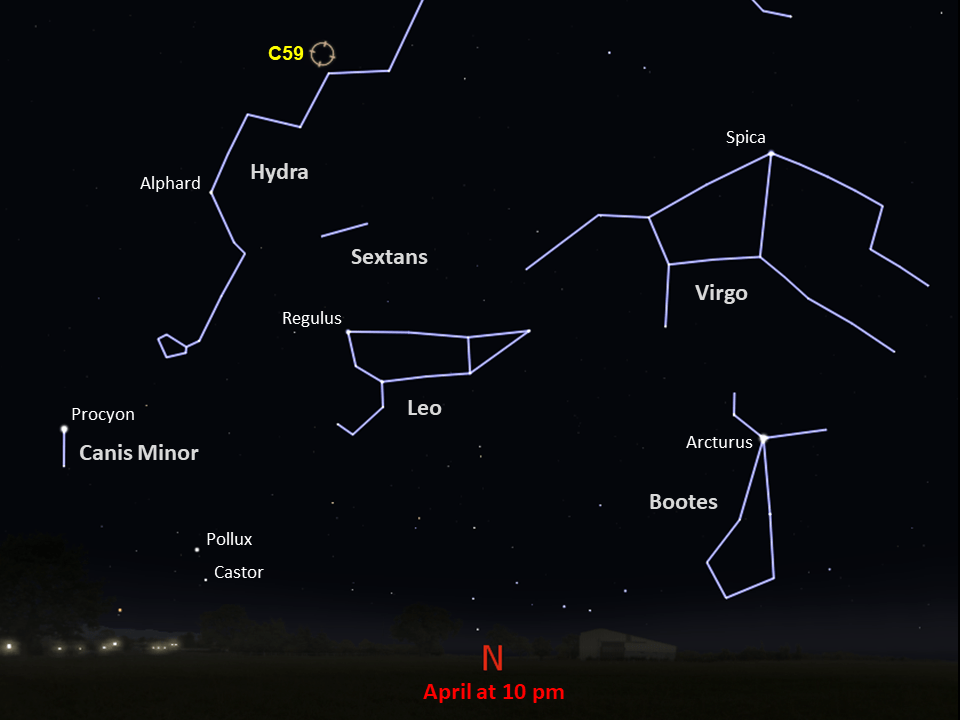Caldwell 59
Also called NGC 3242 and the Ghost of Jupiter, Caldwell 59 was discovered by astronomer William Herschel in 1785.
Distance
1,400 light-years
Apparent Magnitude
7.8
constellation
Hydra
object type
Planetary Nebula
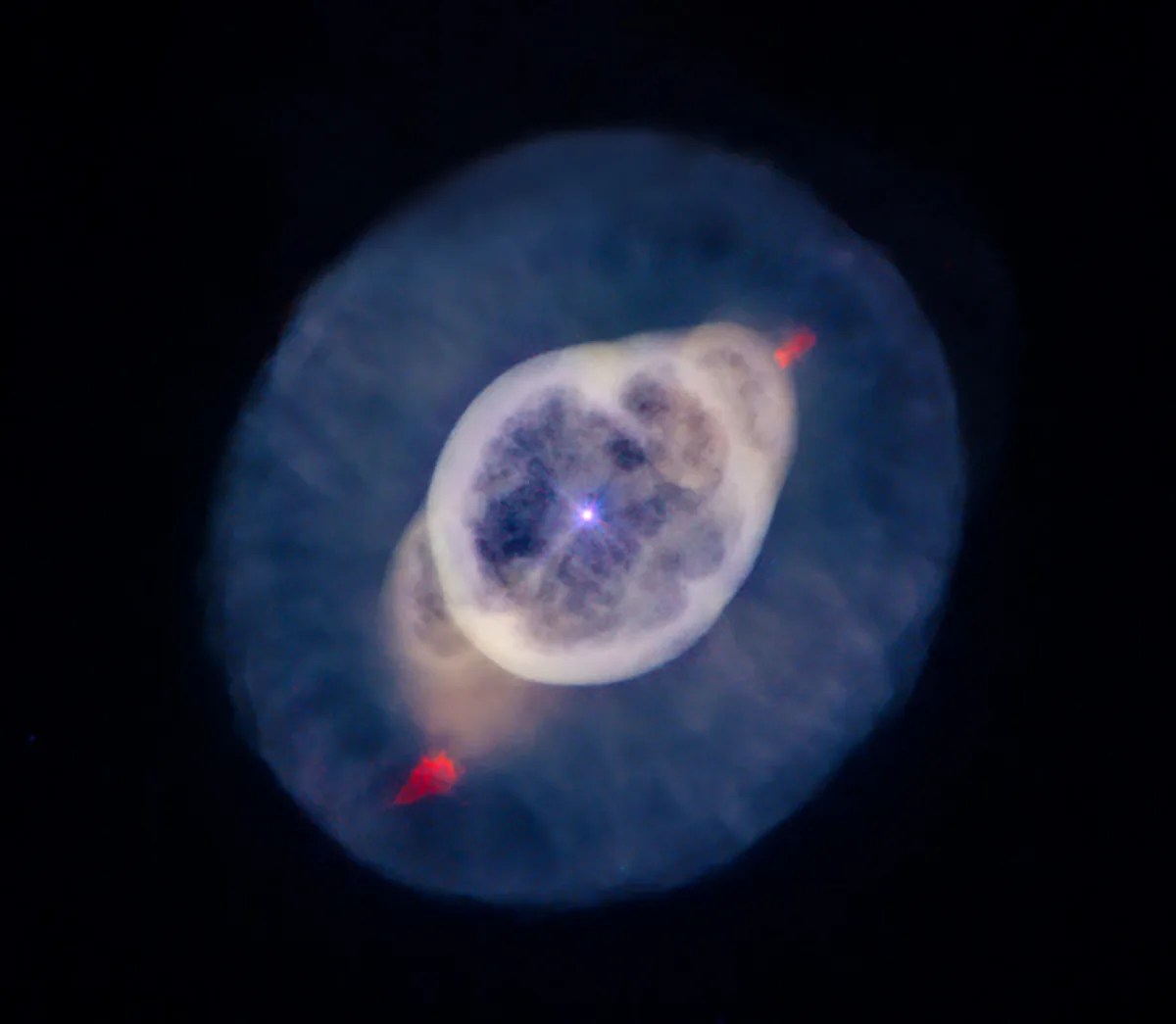
After an average star like the Sun finishes burning through the supply of hydrogen and helium fuel in its core, it swells up into a cool, red giant star. In a last gasp before death, it throws off the layers of gas in its outer atmosphere in a brief but beautiful cosmic display called a planetary nebula. This exposes the core of the dying star — a dense, hot ball of carbon and oxygen called a white dwarf, which is doomed to fade out completely over time. The white dwarf is so hot that it shines very brightly in ultraviolet light, which then causes the gaseous material expelled by the dying star to glow.
Hubble’s Wide Field and Planetary Camera 2 captured this image of Caldwell 59, a planetary nebula also cataloged as NGC 3242. The ghostly image is part of a collection of Hubble observations made of planetary nebulae in the mid-1990s, which revealed never-before-seen details in these stellar shrouds and helped astronomers better understand the late evolutionary stages of average, mid-size stars.
Caldwell 59 is sometimes called the Ghost of Jupiter for its faint resemblance to our solar system’s ruling gas giant planet, though it is much larger and farther away. If we could travel at the speed of light, we could reach Jupiter in about 40 minutes, but traveling at the same speed to this nebula would take over 1,400 years.
Although the star that produced it lived for billions of years, Caldwell 59 only has a lifetime of about 10,000 years. As the white dwarf quickly cools and the ultraviolet light dwindles, the surrounding gas will cool and fade. The gas expelled from the dying star carries traces of newly minted carbon and nitrogen from the atmosphere of the dying star. This material will drift outward through space until it is recycled and drawn in to the formation of a new star.
Caldwell 59 was discovered by astronomer William Herschel in 1785. It is found in the Hydra constellation, and from the Northern Hemisphere it is best viewed during spring, although it remains low in the southern sky. It rises much higher in the sky during autumn from the Southern Hemisphere. This magnitude-7.8 cosmic sculpture appears similar in size to the planet Jupiter when seen in the night sky (another reason for its nickname), though through a large telescope it will look startlingly like an eye.
For more information about Hubble’s observations of Caldwell 59, see:
Cosmic Eye: NGC 3242
NGC 3242, Ghost of Jupiter
Glossary
Magnitude - The brightness of an astronomical object, represented by a number; bright objects have low numbers on the magnitude scale, while dim objects have high numbers.
Nebula - An interstellar cloud of dust and gas; either a location where new stars are being forged or a cloud of material ejected into space by a dying star.
Planetary Nebula - An expanding shell of gas around an aging or dying Sun-like star, cast off by the star.
Red Giant - The late evolutionary stage of an intermediate-mass star that has exhausted the nuclear fuel in its core and now fuses hydrogen in an expanding shell around the core.
White Dwarf - The core of a dead Sun-like star whose outer layers have been expelled into space.
Explore Hubble's Caldwell Catalog
The following pages contain some of Hubble’s best images of Caldwell objects.
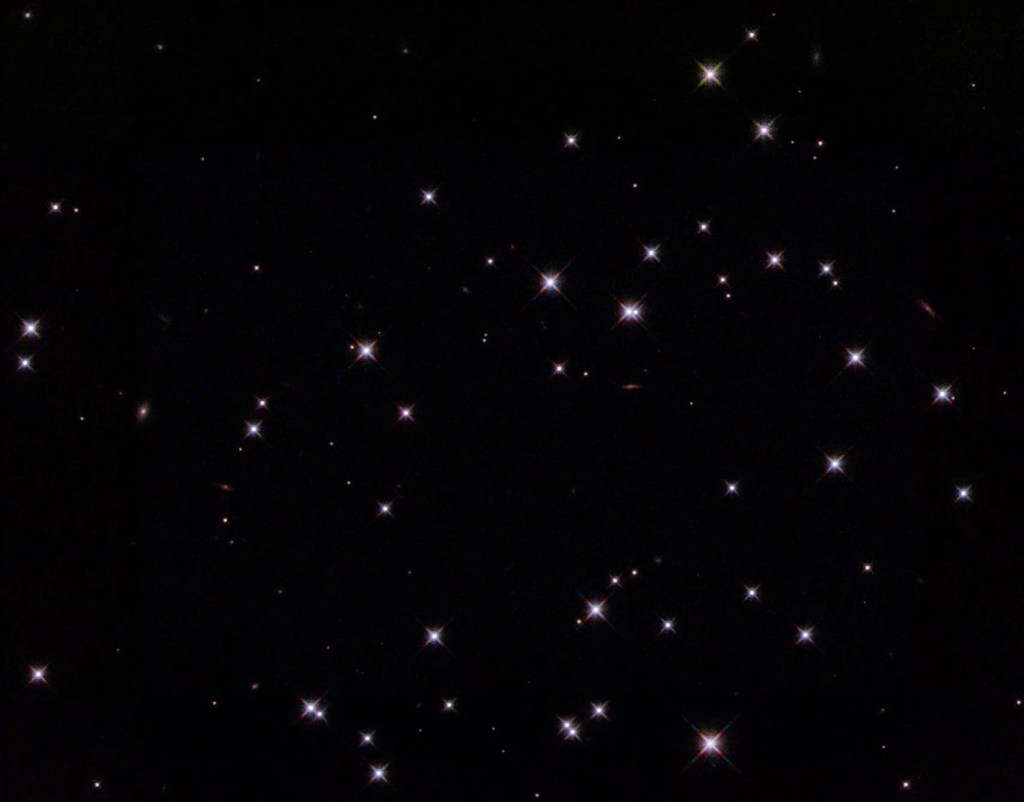
Also known as NGC 188, this group of stars formed from a large cloud of gas making the stars roughly…
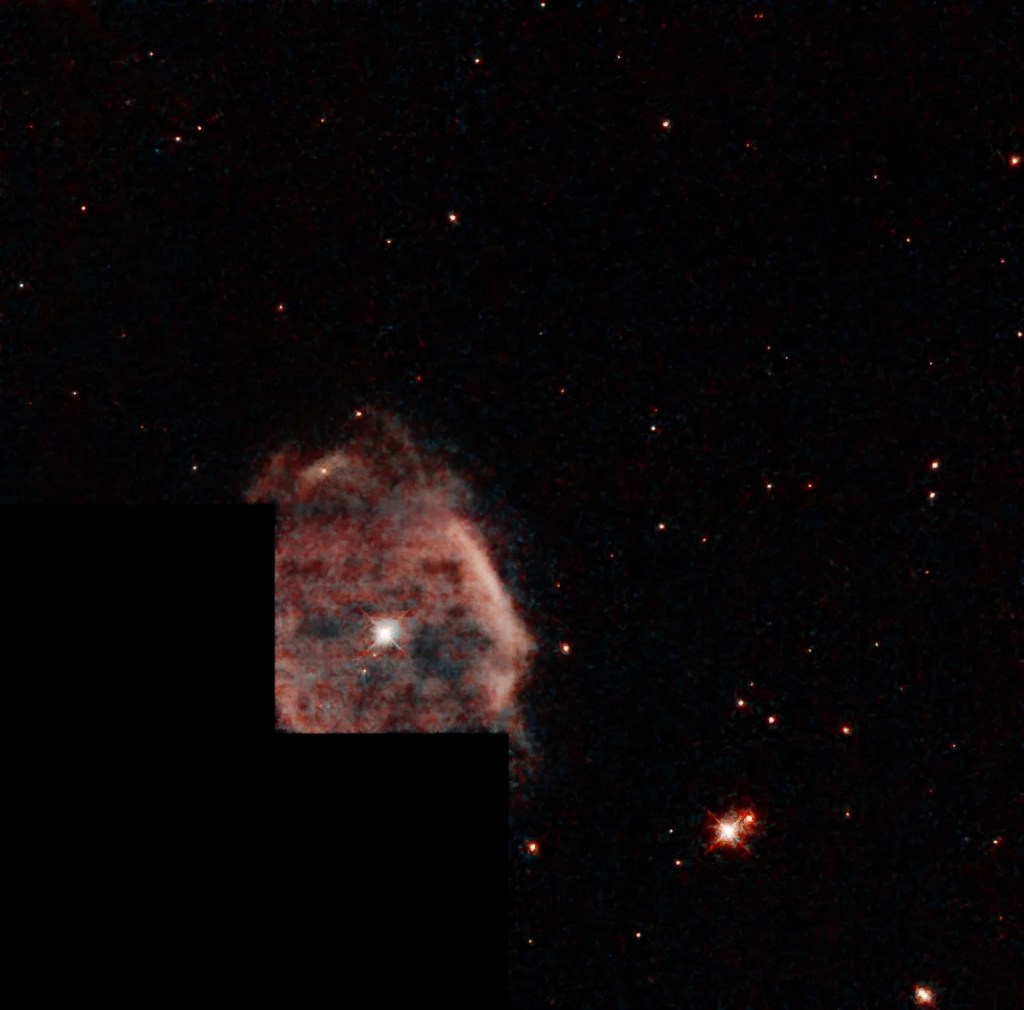
This shell of gas is expanding outward, away from the dying star within.
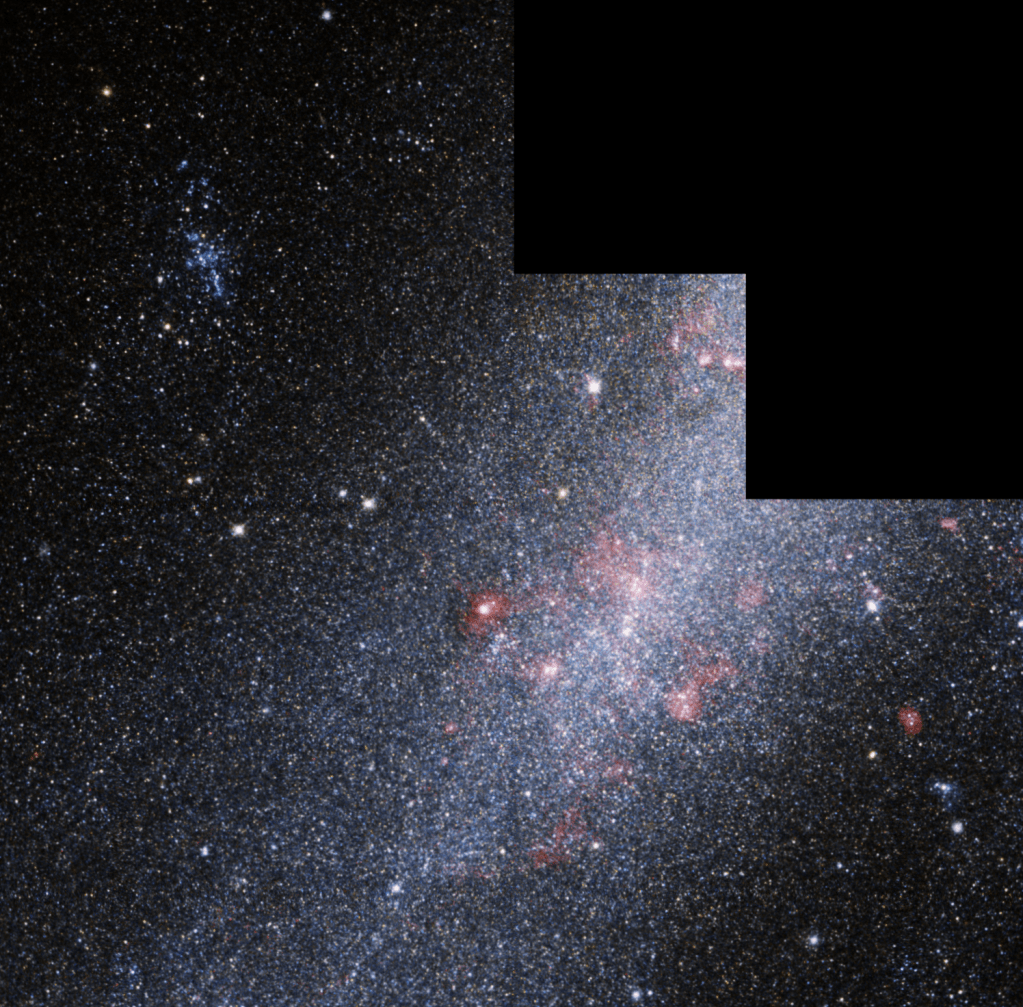
This barred spiral galaxy was first spotted by British astronomer William Herschel in April 1793 in the constellation Draco.

























